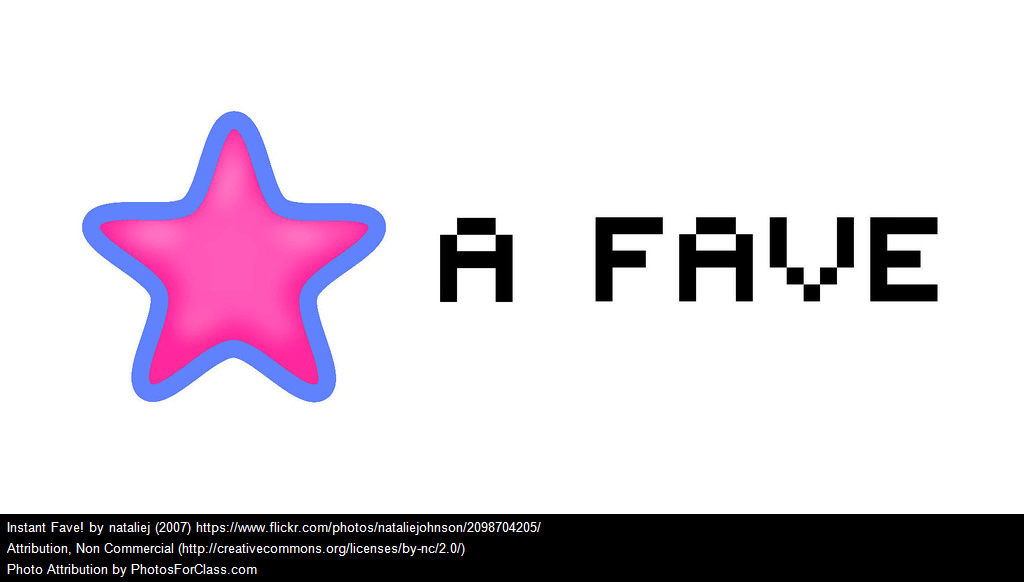
As regular readers know, I’ve been doing the Classroom Q&A column over at Education Week for thirteen years.
And I plan to continue doing it for quite a few more years.
I have so many contributors now, though, that there really isn’t space there for my annual thematic compilation posts, where I collect links to all the posts on particular topics.
So, I’m starting to do it here instead.
Today’s theme is on Teaching English Language Learners:
Favorite Lessons From Teachers for English-Learner Newcomers
Marry academic content with language development for the best results in teaching English learners who are new to the United States.
When Teaching English Learners, Embrace These 3 Critical Mindsets
English learners will have more success if teachers adjust their thinking. Here’s how.
How to Use AI Tools to Support English-Language Learners
There are many free tools available to educators, but a desired output is key to good results.
How to Connect With English-Language Newcomers. Teachers Share Their Favorite Lessons
Stock classrooms with books that reflect students’ lives, languages, and cultures and invite them into as yet unfamiliar worlds.
The Best Ways to Make Content More Accessible to English-Learners
There are plenty of strategies for helping ELLs access content. Here are ones that are simple and easy to follow.
Math Is Also a Foreign Language to English-Learners. How to Reach Them
As tough as math mastery can be for any student, learning it along with English calls for additional strategies. Try these nine.
Emergent Bilinguals Want to Go to College. You Can Help Them
How to Create College and Career Pathways for English-Learners
‘Celebrating Mistakes’ and Other Ways to Help English-Learners
How to Help Long-Term English Learners Progress
Use Practical Strategies to Improve English-Learners’ Speaking Skills
Listening Is the Key to Teaching English-Learners How to Speak
Tips for Encouraging English-Learners to Practice Speaking
Crystal Ball Predictions: What Will Education for ELL Students Look Like in 10 Years?
In the next decade, schools just might appreciate English-learners for whom they are and the language skills they possess. Read more.
14 Strategies for Teaching Intermediate English-Language Learners
Using drama, sentence frames, and academic conversations are a few teacher-recommended instructional strategies for intermediate ELLs. Read more.
Four Educator-Recommended Approaches for Teaching English-Language Learners
Five educators recommend classroom strategies for teaching ELLs, including translanguaging & consistency. Read more.
The Six Most Effective Instructional Strategies for ELLs—According to Teachers
Teachers share their “go-to” strategies for teaching English-language learners, including sentence starters and Total Physical Response. Read more.
Assessment Strategies for English-Language Learners
Four educators share practical assessment strategies to support English-language learners. Read more.
Thirteen Instructional Strategies for Supporting ELL Newcomers
Five educators share effective instructional strategies to use with English-language-learner newcomers, including using images and games. Read more.
Author Interview: ‘Reading & Writing With English Learners’
Authors Valentina Gonzalez & Melinda Miller answer questions about their book Reading & Writing with English Learners: A Framework for K-5. Read more.
12 Common Mistakes Made by Teachers of English-Language Learners
Don’t assume students who are paying attention understand what’s being taught and, especially for young children, support learning in their home language. Those are among the ideas six educators share for helping ELLs. Read more.
Don’t Make Assumptions About Your ELL Students
Seven educators offer their nominations for the most common mistakes made by teachers of ELLs, including making background-knowledge assumptions and not providing enough scaffolding. Read more.
Teachers Must Create Ways ELL ‘Students Can Show Us What They Know’
Four educators share common mistakes made by teachers of English-language learners, including not being creative in how ELLs can show us what they know and by translating “everything.” Read more.
Educators Must ‘Walk Alongside Afghans and Support Them’
12 Ways to Support Afghan Refugee Students
Raising ‘the Bar’ for ELL Instruction
Teachers With ‘Deficit Perspectives’ Do Not Help English-Language Learners
Nine Mistakes Educators Make When Teaching English-Language Learners
*Strategies for Grading ELLs in Content Classes
Five educators share suggestions for grading English-language learners in “mainstream” content classes, including emphasizing formative assessments and separating language proficiency from content knowledge.
*Seven Ways to Support ELLs in Online Content Classes
I offer seven suggestions on how to help English-learners when doing remote teaching, including by providing graphic organizers and models.
*Visualization of ‘Tips for Remote Teaching With ELL Students’
Teacher Wendi Pillars shares a visual illustration of the points made in Larry Ferlazzo’s video, “Tips for Remote Teaching With ELL Students.”
*Video: ‘Tips for Remote Teaching With ELL Students’
Larry Ferlazzo continues with his video series offering advice on dealing with the school closure crisis. In this one, he provides suggestions to teachers of English-language learners, including developing a student-driven curriculum and creating opportunities for one-to-one conversations.
*Helping ELLs Succeed in Distance Learning
Teacher Sarah Said offers suggestions about how teachers can better communicate with English-language learners when teaching online, including by modeling and offering empathy.
*Supporting Multilingual Learners ‘Through the Storm’ of COVID-19
Three educators of multilingual students share their strategies to manage the transition to online learning, including using translation apps to communicate with parents and maintaining a sense of community with their classes.
*Ten Strategies for Teaching English-Language Learners Online
Four teachers offer specific suggestions for teaching English-language learners online, including by maintaining consistency and not overdoing it.
*’Prevention Is the Best Way to Support Long-Term English-Learner Students’
Four educators provide recommendations on how to support long-term English-learners, including providing more support to them earlier and identifying whether they have other special needs earlier, too!
*’Make It Clear to Long-Term English-Learners That Their Voices Matter’
Six educators share advice on how to support long-term English-language learners, including emphasizing vocabulary development and academic language.
*Ways to Support Long-Term English-Language Learners
Eight educators offer their recommendations about how schools and their teachers can best support long-term English-language learners, such as keeping expectations high for students.
* The Best Co-Teaching Advice Is to ‘Be Resilient’
Elizabeth Stein, Jenny Vo, Becky Corr, Andrea Honigsfeld, and Maria Dove share their commentaries on effective co-teaching arrangements.
* Strategies for Effective Co-Teaching Arrangements
Tan Huynh, Abby Shink, Gloria Lodato Wilson, Joan Blednick, Heather Stinson, Dr. Catherine Beck, and Dr. Heidi Pace talk about the “do’s and don’ts” of co-teaching.
* Ways to Be a Successful Co-Teacher
Amber Chandler, Margaret Searle, Bradley Witzel, and Wendy W. Murawski wrap up a three-part series on how to be successful co-teachers.
* Ways to Build Speaking Skills With ELLs
Valentina Gonzalez, Sarah Said, Mary Ann Zehr, Dr. Jeff Zwiers, and Dr. Maneka Deanna Brooks share strategies for encouraging English-language learners to practice speaking their new language.
* ‘Promoting Speaking for ELLs Must Be Intentional’
Joyce Nutta, Carine Strebel, Jenny Vo, Dr. Catherine Beck, Dr. Heidi Pace, and Pamela Broussard share their ideas for teaching speaking to ELLs.
* Promote Speaking With ELLs Through ‘Community, Conversations, and Celebrations’
Sandra C. Figueroa, Cecilia Pattee, Barbara Gottschalk, Michael D. Toth, Becky Corr, and Susan Michalski suggest ways teachers can help ELLs develop their English-speaking abilities.
* ‘Planning, Scaffolds, & Time’ Are Needed to Support Speaking With ELLs
In Part Four of this series, Luis Javier Pentón Herrera, Jennifer Orr, Dr. Lindsey Moses, Nancy Callan, Kelly Wickham Hurst, Areli Schermerhorn, and Mary Amanda (Mandy) Stewart share instructional strategies to support ELLs speaking in class.
* Cooperative Learning Can Promote ELLs’ Academic Oral Language
Sonia Soltero, Kevin Jepson, Susan Gaer, Michele L. Haiken, Sarah Thomas, and Gloria Pereyra-Robertson offer suggestions for teaching ELLs in this series’ final post.
* Ways to Differentiate Instruction for ELLs
Valentina Gonzalez, Jenny Vo, Tonya Ward Singer, Carol Ann Tomlinson, and Nélida Rubio discuss ways to differentiate instruction for English-language learners.
* Differentiate for ELLs by ‘Establishing a Welcoming and Safe Classroom’
Sandra C. Figueroa, Becky Corr, Sydney Snyder, Adria Klein, Michael D. Toth, and Barbara Gottschalk share their suggestions on differentiating instruction for ELLs.
*’The Best Place to Start’ When Teaching ELLs ‘Is by Getting to Know Your Students’
Judie Haynes, Debbie Zacarian, Eugenia Mora-Flores, Melissa Jackson, Joyce Nutta, and Carine Strebel contribute their ideas on differentiated instruction for English-language learners.
* ‘Every Teacher’ Has to Help ELLs Meet Common-Core Standards
Tan Huynh, Stephaney Jones-Vo, Shelley Fairbairn, Bret Gosselin, Mary Amanda (Mandy) Stewart, Emily Phillips Galloway, Nonie Lesaux, Stela Radovanović, Pete Lawrence, and Betsy J. Tregar offer their responses to a question about ELLs and the Common Core State Standards.
* ‘Unlocking the Common Core’ With English-Language Learners
Kevin Jepson, Elizabeth Iwaszewicz, Dr. Heidi Pace, Cathy Beck, Gayle Westerberg, and Julie Goldman contribute their thoughts on how English-language learners can meet the Common Core State Standards.
* Everything You Wanted to Know About Dual Immersion But Were Afraid to Ask
Elizabeth B. Beltran, Barbara Gottschalk, Dr. Conor P. Williams, Carol Salva, Margarita Calderón, Ph.D., Shawn Slakk, and Leslie Davison explain what “dual immersion” is in concept and in practice.
* ESSA & English-Language Learners
Margo Gottlieb, Sarah Said, Catherine Beck, Heidi Pace, Heather Wolpert-Gawron, Tabitha Dell’Angelo, and Lindsey Moses share their thoughts about how the Every Student Succeeds Act will affect English-language learners.
* Teaching ELLs to Write Academic Essays
Tan Huynh, Vicky Giouroukakis, Maureen Connolly, Margo Gottlieb, and Ivannia Soto share suggestions on assisting English-language learners with academic writing skills.
*Home-Language Support ‘Helps Learners Navigate Both Worlds’
Anna Bartosik, Nathan Hall, Chloe Smith, and Beth Konomoto wrap up this three-part series with their suggestions about the role of an ELL students’ home language in the classroom.
* Understanding the Benefits of a Student’s Home Language
Rosa Isiah, Tan Huynh, Karen Nemeth, and Sarah Thomas contribute their ideas on the role of English-language learners’ home language in school.
* ELL Students’ Home Language Is an Asset, Not a ‘Barrier’
Melissa Eddington, Wendi Pillars, Tracey Flores, Sandy Ruvalcaba Carrillo, and Mary Ann Zehr offer their thoughts on the role of an ELL student’s home language in the classroom.
* Response: Ways to Help ELLs Learn Pronunciation
Wendi Pillars, Paul Boyd-Batstone, Ivannia Soto, Judie Haynes, Diane Mora, Eugenia Mora-Flores, and many readers offer suggestions on how to help English-language learners develop good pronunciation skills.
* Effective Strategies for ELL Error Correction
Anabel Gonzalez, Katie Brown, Tracey Tokuhama-Espinosa, David Freeman, and Yvonne Freeman, and readers, offer suggestions on how to handle error correction with English-language learners.
* Teaching English-Language Learners With Special Needs
Frank E. Vargo, Cindy Pirro Vargo, Donna DeTommaso-Kleinert, Susan Hillyard, and a reader contribute their thoughts on how to support ELLs with special needs.
* Ways to Support ELLs With Special Needs
Maria Montalvo, Beverly Maxwell, Ann Wilson, and Jennie Farnell share their suggestions on how to support English-language learners with special needs.
* Building Relationships With Families of ELLs
Rusul Alrubail, Anna Bartosik, Jordan Lanfair, Anabel Gonzalez, Karen Nemeth, and Judie Haynes offer suggestions on how to engage with parents of English-language learners.
* Teaching ELLs That ‘Science Is a Verb’
Maria Grant, Diana Lapp, Judy Reinhartz, Lori Fulton, Brian Campbell, and Laura Cabrera contribute their ideas on using the Next Generation of Science Standards with English-language learners.
* Teaching Science to English-Language Learners
Alicia Johal, Maria Montalvo-Balbed, Donna Barrett-Williams, Caleb Cheung, Laura Prival, Claudio Vargas, and Ariane Huddleston share their suggestions on using the NGSS with English-language learners.
* Helping English-Language Learners to ‘Survive & Thrive’
Mary Cappellini, Ekuwah Moses, Giselle Lundy-Ponce, Pamela Mesta, Olga Reber, and Heather Wolpert-Gawron contribute their suggestions about teaching ELLs.
* Teach English-Language Learners by Meeting Them ‘Where They Are’
Wendi Pillars, Annie Huynh, Regie Routman, William Himmele, and Pérsida Himmele share their advice on teaching English-language learners.
* Don’t Leave English-Language Learners ‘in the Cold’
Educators Sonia Nieto, Alicia López, Diane Staehr Fenner, Sydney Snyder, Katie Brown, Judie Haynes, and Virginia Rojas share their suggestions on how we can encourage our colleagues to face the challenge of teaching ELLs “face-on.”
* Ways to Encourage Support for English-Language Learners
Diane Mora, John Wolfe, Toby Karten, Armine Spoelstra, Kirke H. Olson, and Rick Murry share there thoughts.
* ELLs & the Common Core—Part One
Educators Wendi Pillars, Virginia Rojas, Debbie Zacarian, and Maria Montalvo-Balbed contribute their responses.
* Supporting ELLs in the Common-Core Era
Kathryn Haydon, Dr. Lindsey Moses, and Lori DiGisi contribute their thoughts. I’ve also included comments from readers.
* Strategies for Vocabulary Instruction—Part One
This post includes suggestions from Katie Brown, Jane Fung, Marilee Sprenger, and Karen Bromley.
* Vocabulary Instruction Is More Than Giving ‘a List of Words’
This column highlights commentaries from Camille Blachowicz, Charlene Cobb, Katherine S. McKnight, Nicole Zuerblis, and Susan Chenelle.
* Ten Principles for Vocabulary Instruction
Laura Robb and Amy Benjamin share their thoughts, and I also include readers’ comments.
* Teaching Strategies for ELLs in Content Classes—Part One
This post shares responses from four experienced educators: Judie Haynes, Mary Ann Zehr, Bárbara C. Cruz, and Stephen J. Thornton.
* ‘Every Teacher Is a Language Teacher’
Margo Gottlieb, Maria Montalvo-Balbed, and Tracey Takuhama-Espinosa contribute their ideas. In addition, I’ve shared responses from readers.
* Ways to Teach Common-Core Math to ELLs
Educators Bill Zahner, Ben Spielberg, Gladis Kersaint, Denisse R. Thompson, Maria Montalvo-Balbed, and Denise Huddlestun share their suggestions for how teachers can best handle this challenge.
* To Help ELLs, We Need to Understand ‘How Language Learning Works’
Staff from Stanford’s “Understanding Language,” Mary Cappellini and Paul Boyd-Batstone, share their thoughts in this post. I also include comments from readers.
* ‘Respecting Assets That ELLs Bring to a School Community’
Four educators—Karen Nemeth, Judie Haynes, David Deubelbeiss, and Julie Goldman—provide guest responses here.
* Many Ways to Help Students Develop Academic Vocabulary
Several educator/authors—Marilee Sprenger; Jane Hill, Kirsten Miller; and Maria Gonzalez—provide guest responses.
* Helping Long-Term ELLs & Evaluating ELL Teachers Fairly
Katie Hull Sypnieski, the best teacher I’ve ever seen in the classroom, and staff from the American Federation of Teachers researching teacher evaluation contribute their responses.
* Ways the ‘Next Generation’ of Standardized Tests Should Treat ELLs
Representatives from the two groups of states preparing the new assessments, the Smarter Balanced Assessment Consortium, or SBAC, and the Partnership for Assessment of Readiness for College and Careers Consortium, or PARCC, contribute responses.
As regular readers know, I’ve been doing the Classroom Q&A column over at Education Week for thirteen years. And I plan to continue doing it for quite a few more years. I have so many contributors now, though, that there really isn’t space there for my annual thematic compilation posts, where I collect links Ed Week Teacher Larry Ferlazzo’s Websites of the Day…







